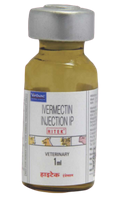
How to fight against fleas, ticks, dust mite, mosquitos and other flying insects?
Ticks, fleas and flying insects are the source of many nuisances for cats and dogs. Their bites are painful and, above all, these parasites can transmit diseases. Regular preventive treatments are necessary to avoid infestation by external parasites.
-
Fleas are the source of sometimes very intense itchiness, and can also transmit digestive worms to animals (e.g.: Dipylidium caninum). In addition, if he catches fleas, your dog or cat may contaminate your home. Flea eggs fall on the ground and give birth to larvae that will hide everywhere.
-
Tick bites are susceptible to infection and, most importantly, ticks can transmit several serious diseases to animals: piroplasmosis, ehrlichiosis, Lyme borreliosis…
Protect your pet against fleas and ticks implies using a specific product. Be careful, ticks are not insects (unlike fleas), but mites, and flea products are not all efficient against ticks.
Flea and tick products are available in many forms: shampoos, collars, pipettes or even tablets. Some allow efficient protection for at least one month. Ask your vet for advice to choose the most appropriate form of administration for your pet.
-
Sandflies are flying insects present in the Mediterranean regions. They are the vectors of a very serious disease for dogs (and sometimes humans), leishmaniasis. In the absence of treatment, this disease is potentially fatal for the dog.
-
When biting dogs, mosquitos can transmit parasitic diseases such as heartworms. These diseases progress with the multiplication of mosquitos.
To protect dogs from flying insects, it is recommended to use suitable repellents and to keep dogs indoors from twilight to morning in areas at risk. Vaccination is possible against canine leishmaniasis. Talk to your vet.





.png)